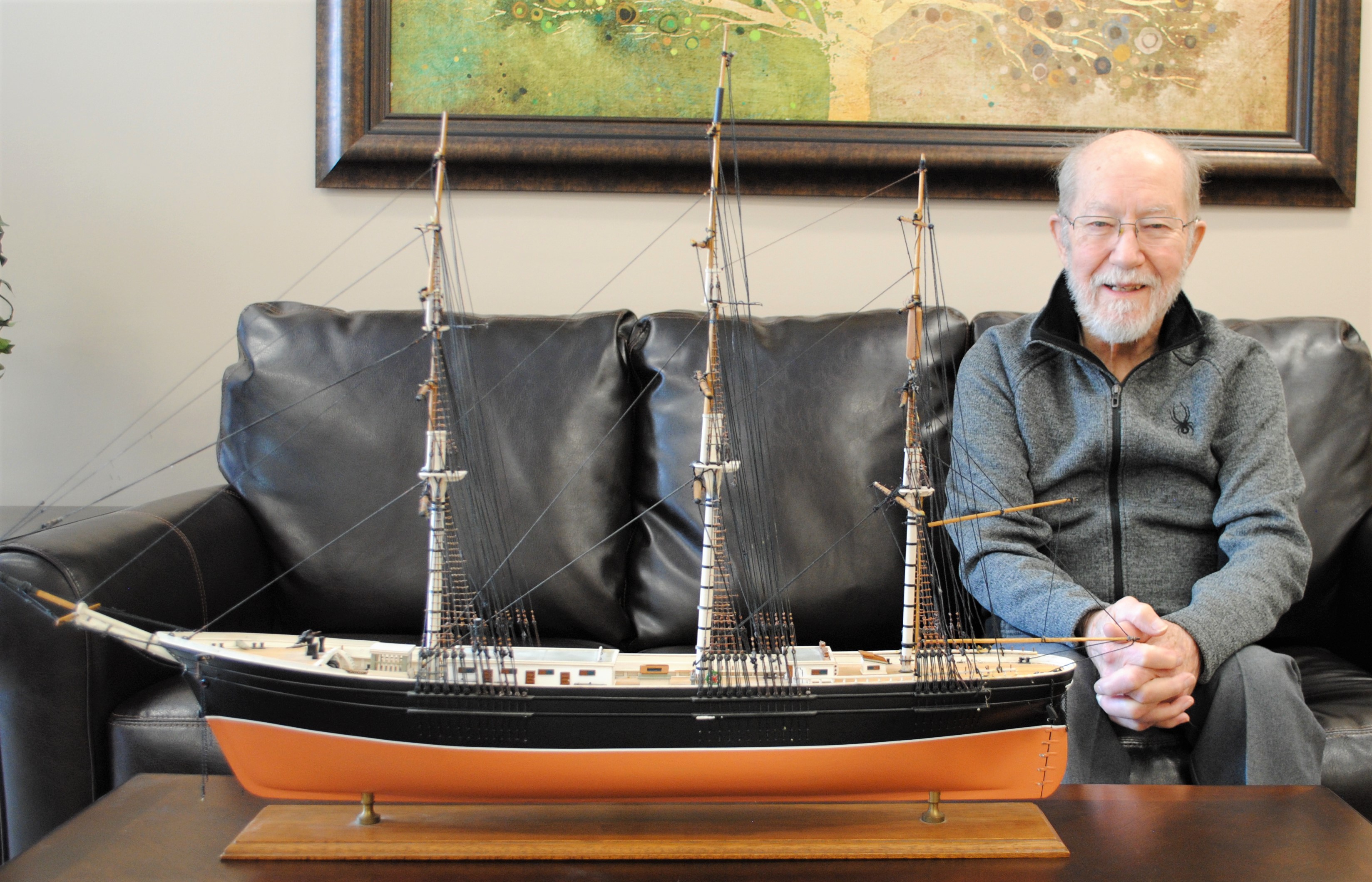
Back in 1854, the Flying Cloud was one of the fastest trade ships on the Atlantic Ocean. Famous for its speed, being one of the largest merchant ships launched in the United States and having a female navigator, a model of the clipper ship now sits inside Addison Township Clerk Pauline Bennett’s office thanks to the efforts of resident Joe Schnur.
After an unfinished version of the model showed up at the township hall a few months ago, Schnur decided to finish building the ship and give it back to his friend, Bennett.
“Pauline – her eyes lit up when she looked at the thing,” Schnur said. “It was just a couple masts, and there was nothing on it yet. This is the kind of stuff she likes, and she’s a very good friend of mine. We’ve been friends for 15 or 20 years. So I said, ‘I’ve got to get that for her.’”
It was a gesture that left Bennett touched.
“It was such a joy when he brought the finished boat in . . . and gave it to me,” she said.
Schnur, an 86-year-old, said the model’s deck was already assembled by the boat’s previous owner, so he was left with the task of tying down the dozens of little strings. He is a big fan of hard work and didn’t want to see someone else’s hard work go unfinished.
“I love craftsmanship, and this fellow who started this was a genius craftsman,” Schnur said. “What he got done was beautiful. So I said, ‘This thing has to live and it’s not going to die. It has to be made a ship again…’ You can’t leave something that was this well done and just forget about it.”
The model had been beaten up a little after being tossed around in the back of a moving truck, so Schnur found himself having to do a lot of improvising to tie strings down and put the broken pieces back together. But, he said it was no big deal. “I didn’t mind because I knew Pauline would really enjoy it,” he said.
In the span of a little over a month, Schnur estimates he spent between 40 and 50 hours just tying knots down. With all of those tiny strings, it was quite the undertaking for someone who had only ever made a small schooner model boat before. “It would take me five to 10 minutes to do a knot,” he said.
But, even though he’s no expert model boat constructor, Schnur does know his fair share about living and working on the water. As a member of the U.S. Navy, Schnur served in Manhattan and lived in Harlem as a sailor from 1951-1955 during the Korean War. Life on the boat is something he can still recall easily.
“A lot of it is just being. When you set on a particular wind angle, you’re all done,” he recalled. “When all of the sails are up and everything, you just sit. So they would dance, they’d play music on accordions and things like that, they did a lot of handicrafts. And when the wind got tough, they would take their lives into their own hands climbing up those masts.”
Because of that, he can look down at the small model deck and appreciate the kind of work that would have gone on around the real Flying Cloud. “The amount of work that goes on with the people on board this thing is incredible,” he said.
The work and the ship’s reputation makes it one fit for a community leader’s office. Built by the famous Dylan McKay and owned by the Grinnell, Minturn & Co. transatlantic shipping company, the Flying Cloud set the record for the fastest passage between Manhattan and San Francisco in 1854 when it made the trip in 89 days and eight hours.
It held onto that record until 1989, more than a hundred years after it had been burned and sold for scrap metal. The ship has even had three books written about it over the years.
But for Bennett, the model will simply serve as a reminder of the selflessness of her longtime pal. “The Flying Cloud is proudly on display and gives me a great pleasure to look at daily,” she said. “It brings a smile as it reminds me of Joe, a great friend.”

Leave a Reply